Mold basics
Time:2023-12-27 19:13:40 / Popularity: / Source:
Evolution history of molds
When did the earliest molds appear?
Facts show that humans began to use molds as early as 5,000 to 7,000 years ago. Without use of molds, it is unimaginable to produce large-scale bronze works such as large standing bronze figure, standing figure of a naked and crowned priest, and Simuwu Dafang Ding.
Facts show that humans began to use molds as early as 5,000 to 7,000 years ago. Without use of molds, it is unimaginable to produce large-scale bronze works such as large standing bronze figure, standing figure of a naked and crowned priest, and Simuwu Dafang Ding.
How did ancients make molds to make products?
Clay mold casting method
Clay mold casting method generally involves process of making models, sculpting patterns, turning clay models, high-temperature roasting, pouring metal liquid, processing and trimming. It is not suitable for casting utensils with complicated shapes and carvings, and requires splitting.
Lost wax casting
Wax materials are first prepared with wax, rosin, grease, etc., then wax molds of different shapes and patterns are made according to needs, and horse manure mud or low-slurry mud is hung to form mold. After drying in shade, heat wax to melt it away to form a mold cavity, then cast it into a mold. This method can use the entire mold without dividing it into pieces, and finished product can achieve high precision.
Molds made by ancients already contain the most important part of modern molds - mold core. That is, core and cavity of modern molds.
Clay mold casting method
Clay mold casting method generally involves process of making models, sculpting patterns, turning clay models, high-temperature roasting, pouring metal liquid, processing and trimming. It is not suitable for casting utensils with complicated shapes and carvings, and requires splitting.
Lost wax casting
Wax materials are first prepared with wax, rosin, grease, etc., then wax molds of different shapes and patterns are made according to needs, and horse manure mud or low-slurry mud is hung to form mold. After drying in shade, heat wax to melt it away to form a mold cavity, then cast it into a mold. This method can use the entire mold without dividing it into pieces, and finished product can achieve high precision.
Molds made by ancients already contain the most important part of modern molds - mold core. That is, core and cavity of modern molds.
Evolution of modern molds-injection molding machines
After entering industrial civilization, our mold base materials have changed from adobe to metal, and material of products has also changed from metallic liquid to plastic melt. In order to adapt to mass production, it is always too efficient to rely on manpower to fill metallic liquid like ancients did, so machines replaced human tools-injection molding machine came into being.
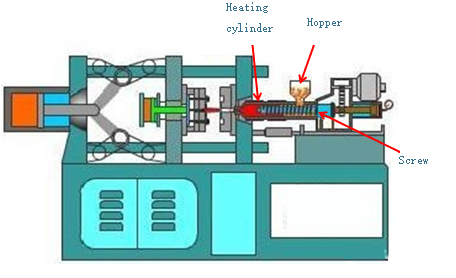
Development of modern molds - ejection system
After injection molding machine became available, people began mass production. People designed the simplest mold (only core and cavity), but encountered many problems in actual production.

Question: After each mold opening, plastic part follows movement of rear mold to complete mold opening action. How to take out plastic part? ? ? (Plastic part is cooled and shrink-wrapped tightly on core).
In view of above problems, mold ejection mechanism came into being. Most of ejection is achieved by ejector rod, ejector pin, ejector block and cylinder.
In view of above problems, mold ejection mechanism came into being. Most of ejection is achieved by ejector rod, ejector pin, ejector block and cylinder.
Development of modern molds—reset system
Corresponding to previous ejection system, after product is ejected, how does ejector reset to enter next molding cycle?
Development of modern mold-cooling system
With ejection system, production efficiency has been greatly increased. However, in each production cycle, it still wastes a lot of time to only rely on natural cooling of plastic parts and then take them out. Therefore, people have developed a cooling system - water transportation. And it turns out that a good cooling system also plays a significant role in controlling quality of plastic parts.
Development of Modern Molds—Slider
For relatively simple products, simply opening and closing mold is enough, but what about following products? We need to convert mold opening and closing movement in one direction into movement in other directions.
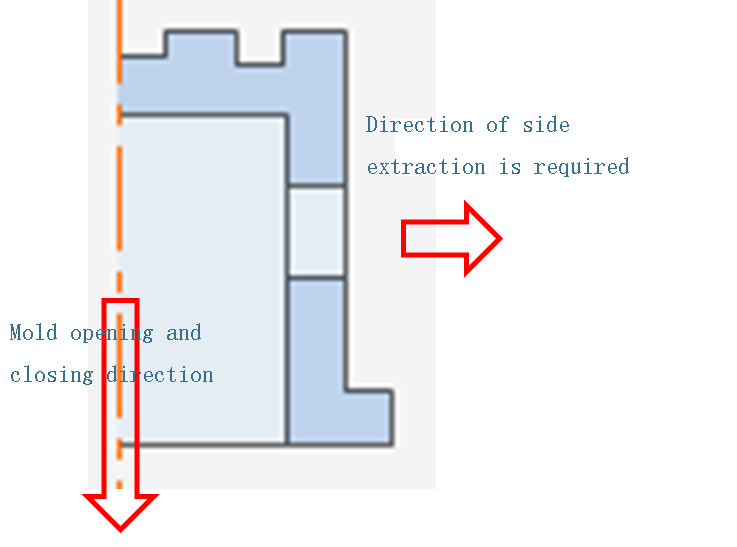
Development of modern molds - lifter
Similar to slier, due to needs of product structure and function, we developed lifter accordingly.
Development of modern molds—glue feeding system
With improvement of product quality requirements, different injection shapes and positions affect quality of injection molded products, so gating system has become an important system of mold.
Mold classification
Two-plate mold (big nozzle mold/single parting surface)
Three-plate mold (fine nozzle mold/double parting surface)
Edge gate two-plate mold: Two-plate mold refers to those molds that can be separated into front and rear halves from parting surface.
Thin-nozzle three-plate mold: Three-plate mold is mainly composed of three parts or mold plates. After mold is opened, each mold plate is separated by a certain distance. Plastic parts fall from space between the two mold plates forming parting surface, and sprue falls from the other side (this is for cold runner molds). This kind of mold that separates plastic parts from runner is called a three-plate mold.
Three-plate mold (fine nozzle mold/double parting surface)
Edge gate two-plate mold: Two-plate mold refers to those molds that can be separated into front and rear halves from parting surface.
Thin-nozzle three-plate mold: Three-plate mold is mainly composed of three parts or mold plates. After mold is opened, each mold plate is separated by a certain distance. Plastic parts fall from space between the two mold plates forming parting surface, and sprue falls from the other side (this is for cold runner molds). This kind of mold that separates plastic parts from runner is called a three-plate mold.
Two-color injection mold
Principle: Two-color injection molding machine uses two material tubes and two sets of molds to injection mold two-color product twice in sequence.
Step:
1. Raw materials are first formed into product A through tube A.
2. Cycle mold opening, molding machine template rotates 180 degrees to B to close mold
3. B raw material is injected into secondary mold cavity through B material pipe to form product and ejected.
Step:
1. Raw materials are first formed into product A through tube A.
2. Cycle mold opening, molding machine template rotates 180 degrees to B to close mold
3. B raw material is injected into secondary mold cavity through B material pipe to form product and ejected.
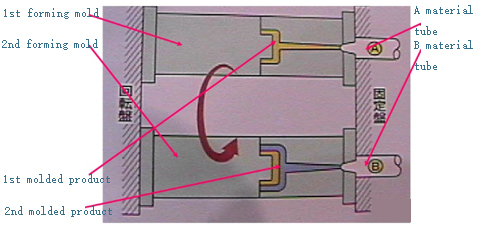
Hot runner mold
Runnerless condensate mold is an injection mold for thermoplastic rubber that uses heating or insulation methods to keep plastic in runner in a molten state, thereby achieving purpose of runner-less condensate or less runner condensate.
Advantage:
1. No flow channel aggregate or less flow channel aggregate, effective utilization rate of material is high, and plasticizing ability of injection machine can be fully utilized.
2. Pressure loss of molten rubber in runner is small, it is easy to fill cavity and shrink, which can avoid dents, shrinkage holes and deformation of plastic parts.
3. Forming cycle is shortened and production efficiency is improved.
4. Gate can be automatically cut off, which improves degree of automation.
5. It can reduce injection pressure and reduce clamping tonnage.
Shortcoming:
1. Closing height of mold equipped with a hot runner plate is increased, and a larger injection machine may be required.
2. Heat in hot nozzle and hot runner plate affects temperature of front mold through thermal radiation and heat conduction. When designing mold, heat transfer should be minimized and cooling of front mold should be enhanced.
3. Mold cost is high
Advantage:
1. No flow channel aggregate or less flow channel aggregate, effective utilization rate of material is high, and plasticizing ability of injection machine can be fully utilized.
2. Pressure loss of molten rubber in runner is small, it is easy to fill cavity and shrink, which can avoid dents, shrinkage holes and deformation of plastic parts.
3. Forming cycle is shortened and production efficiency is improved.
4. Gate can be automatically cut off, which improves degree of automation.
5. It can reduce injection pressure and reduce clamping tonnage.
Shortcoming:
1. Closing height of mold equipped with a hot runner plate is increased, and a larger injection machine may be required.
2. Heat in hot nozzle and hot runner plate affects temperature of front mold through thermal radiation and heat conduction. When designing mold, heat transfer should be minimized and cooling of front mold should be enhanced.
3. Mold cost is high
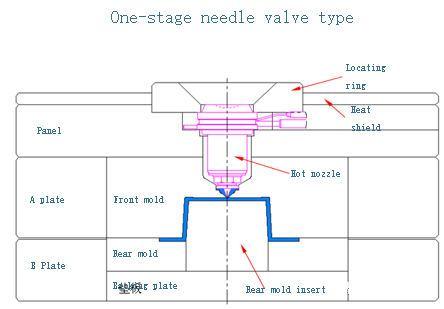
Gate: Common gate forms and their advantages and disadvantages
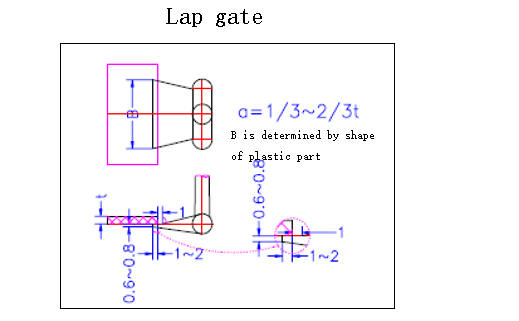
Advantages:
1) It is an evolved form of side gate and has various advantages of side gate;
2) It is a typical impact gate, which can effectively prevent spray flow of plastic melt.
Disadvantages:
1) Self-separation of gate and plastic parts cannot be achieved;
2) It is easy to leave obvious gate scars.
Application: Suitable for flat plastic parts with surface quality requirements.
1) It is an evolved form of side gate and has various advantages of side gate;
2) It is a typical impact gate, which can effectively prevent spray flow of plastic melt.
Disadvantages:
1) Self-separation of gate and plastic parts cannot be achieved;
2) It is easy to leave obvious gate scars.
Application: Suitable for flat plastic parts with surface quality requirements.
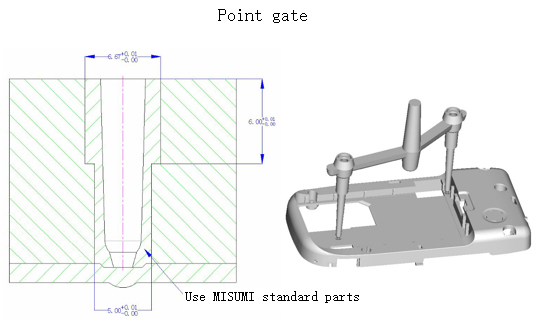
Summary: Advantages and disadvantages of various types of gates
| Gate type | Advantage | |
| Side gate | Small pressure loss and easy injection molding | Gate needs to be cut later. |
| Latent gate | No residue on gate | Large pressure loss |
| Pin gate | No residue on gate and material is more balanced. | Runner is longer. |
| Banana gate | A lot of room for gate selection, and there are no gate residues. | Processing is more complicated. |
Last article:Design of Injection Mold for Stop Cap
Next article:Detailed Tutorial on Mold Flow Analysis
Recommended
Related
- Solutions and Practical Guide to Burning Problems in Injection Molding Machines Under 800T12-13
- Using Moldflow to Optimize Deformation in Connector Products12-13
- Solutions and Practical Guide to Warpage Problems in Injection Molding Machines Under 800T12-12
- Solutions and Practical Guide to Porosity Problems in Injection Molding Machines Under 800T12-12
- Solutions and Practical Guide to Product Strain Problems on Injection Molding Machines Under 800T12-11








